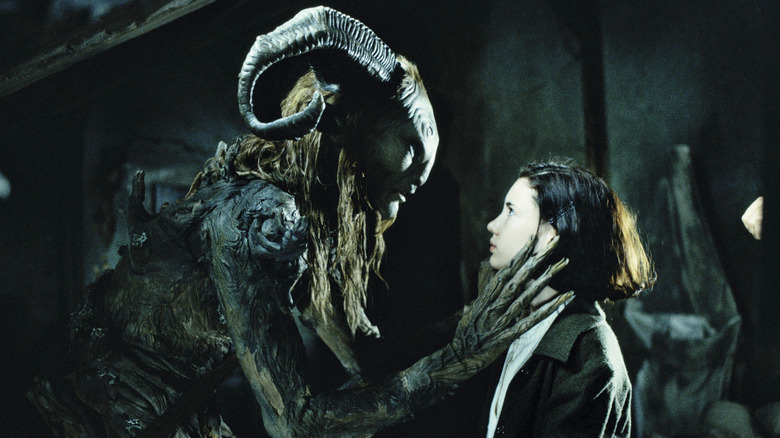
Guillermo del Toro's masterpiece "Pan's Labyrinth" is an elegant descent into a nightmarish fairy kingdom. It is one of the finest examples of the style of magical realism in modern cinema, for the way it twists the fairy tale narrative to examine violent political change through the eyes of its young protagonist, Ofelia. "Pan's Labyrinth" is set in Spain under Franco's fascist rule during World War II. Ofelia's stepfather, the ruthless Captain Vidal, hunts republican rebels with sadistic glee. His character "stands not just for fascism but for any sort of authoritarian or totalitarian institution or belief system," any force that destroys the fundamental joys and beauty of being human such as independence and creativity (per Reel Thinking).
As a subversive work that rejects conformity and control, "Pan's Labyrinth" has some of the best use of magical realism in contemporary film. But the style has a long history, stretching back half a century and spanning continents.
What Is Magical Realism?
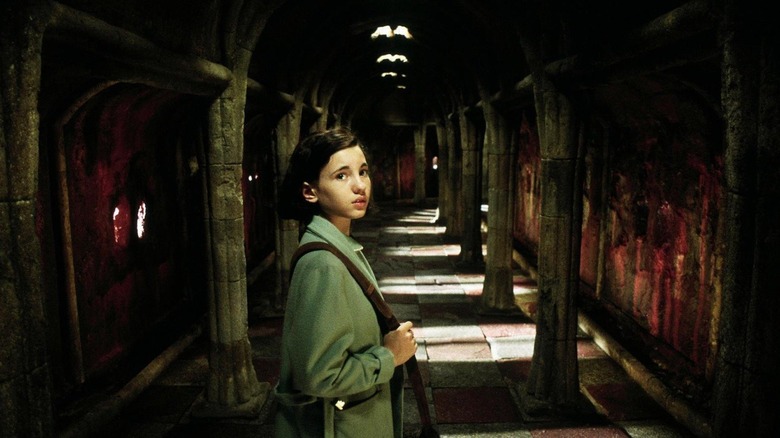
The aesthetic style of magical realism was developed by Latin American authors such as Gabriel Garcia Márquez, Isabel Allende, and Arturo Uslar-Pietri as a way of coping with the political unrest and wars for liberation against the authoritarian regimes which swept through Latin America in the 1960s and 1970s. Therefore, magical realist works typically have a revolutionary spirit and use fantastical elements to critique elite or conservative social forces.
Magical realism blends the real world with fantasy or surrealism. Magic is just another part of the character's reality, occurring in ordinary settings, time periods, and situations. These fantastical elements are used to give the audience a better understanding of the characters' real-life circumstances and difficult human experiences. They are often symbolic and speak to political themes such as identity, race, and class.
Magical realism works best when filmmakers blend the magical components seamlessly into an authentic environment, capturing the audience's imagination with a unique yet familiar world. These types of films are often visually stunning with bold colors, dazzling camera movements, and intricate, fantastical production design.
If you liked a contemporary showcase of magical realist filmmaking like "Pan's Labyrinth," there are other films with similar heartfelt stories and stunning visuals that you should watch.
The Shape Of Water
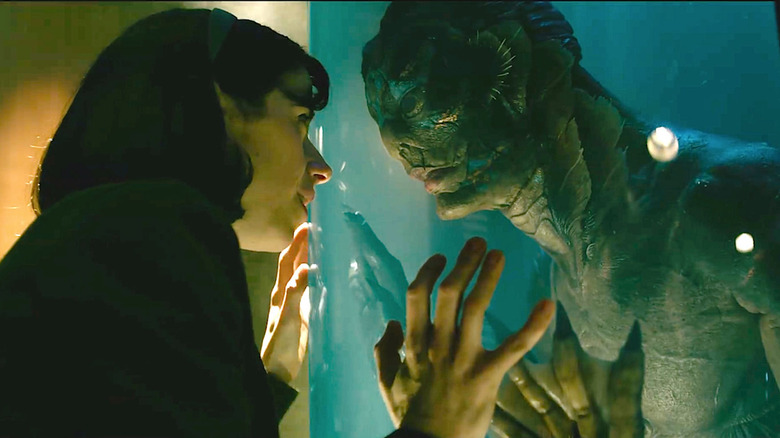
While "Pan's Labyrinth" is Guillermo del Toro's most famous magical realist film, you might also consider checking out the beautiful romance "The Shape of Water," which won Best Picture in 2017. "The Shape of Water" combines an austere Cold War drama with a Universal monsters homage in the story of a humanoid amphibian that Elisa (Sally Hawkins), a deaf woman and cleaner at a secret government laboratory, falls in love with.
Guillermo del Toro grounds "The Shape of Water" in the familiar tensions of an era that was under threat of nuclear war — the sense of paranoia and anger, patriarchal intolerance, a cold and sleek scientific setting, government agents on the hunt — with the magical element of the kind-hearted sea creature. His connection with Elisa is unexpected and magical, even becoming physically affectionate. The film's deep green and blue aquatic tones create a dreamy alternate reality where star-crossed lovers from sea and shore can unite.
"By introducing this foreign creature to the audience and allowing us to see him as Elisa does, we come to see the common oppression of the Other with new eyes, and what it means to love someone for who they truly are," Siobhan Spera writes in Film School Rejects. The sea creature represents the struggles of marginalized communities against those who persecute them. His love with Elisa in particular — the way it is viewed as taboo, causing society to hunt them down to stop them — serves as an allegory for interracial and queer relationships. Non-white people and queer people can identify with being judged by society because of who they are and who they love. "The Shape of Water" uses magical realism to illustrate the insidiousness of this kind of bigotry.
Like Water For Chocolate
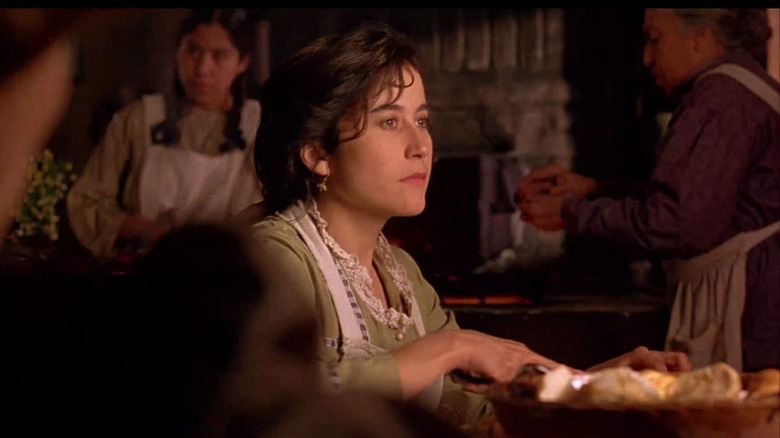
"Like Water for Chocolate," from Mexican filmmaker Alfonso Arau, is based on Laura Esquivel's best-selling first novel. The film is inspired by the Latin American tradition of magical realism in the way that it blends the fantastical with the everyday. Esquivel drew from the history of her colorful family to weave a romantic tale set in 1900s Mexico about a young woman named Tita who discovers that she is forbidden from marrying the love of her life, Pedro.
There are several magical elements at play in this lush film. Tita has a magical touch with food that is mysterious and connected to a supernatural power. In one scene, we see the kindly ghost of the character Nacha offering her advice. During the opening scene, the narrator explains that Tita cried in her mother's womb when onions were being chopped. When she was born, her tears became a bag of salt that the family keeps in the home. Tita also has magical healing powers. When a baby cannot handle Rosaura's milk, Tita's breasts fill with the drink and she is able to nurse him.
Tita literally pours her emotions into her cooking. When she learns Pedro is marrying someone else, she cries into the wedding cake batter, and those who eat it start weeping and yearning for their true love. "Like Water for Chocolate" flirts with unreality to highlight how falling in love, our familial connections, and breaking bread with one another is the true magic in this world. Its sensual cinematography and use of warm colors are hypnotic, transporting you to a world of passion and heightened emotions.
Birdman
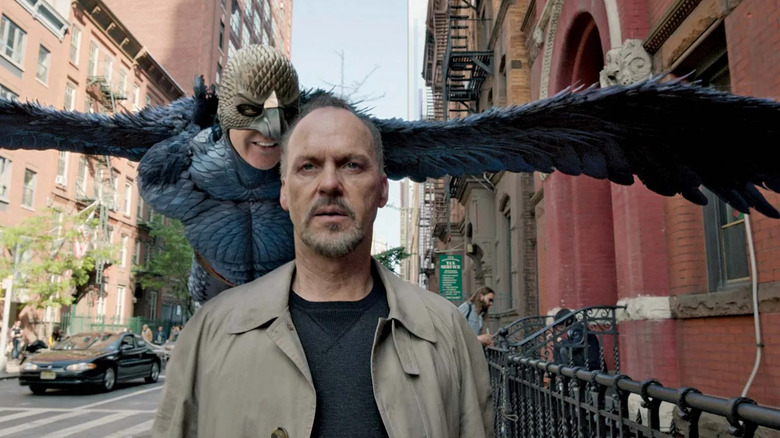
Alejandro González Iñárritu is another Latin American filmmaker who employs magical realist techniques to make viewers question what they are seeing. His 2014 film "Birdman" follows Riggan, a former blockbuster action star making his Broadway debut. He is torn between his superhero persona and becoming a respected theatre artist. Employing kinetic visuals and set against a gritty New York City backdrop, Iñárritu constantly toys with the audience as to whether Riggan truly has powers or is mentally unstable.
Riggan's magical abilities, such as telekinesis, amplify over the course of the film. We see him floating, moving a vase with his mind, and flying through the city. However, these shots are sometimes followed up by conflicting ones where Riggan has the object in his hand or a cabbie is demanding him to pay. Iñárritu's use of an immersive, single-take shooting style and the frenetic jazz score adds to this sense of wild instability and off-kilter reality. Following Riggan objectively rather than using subjective shots from his point of view seems to indicate that what we are seeing is real.
The magic of "Birdman" continues in the ending, where Riggan seemingly flies out of his hospital room after surviving a suicide attempt. His daughter Sam (Emma Stone) smiles and her eyes follow him as he (off-screen) ascends higher into the sky, thereby accepting his work in superhero films as an important part of himself.
Edward Scissorhands
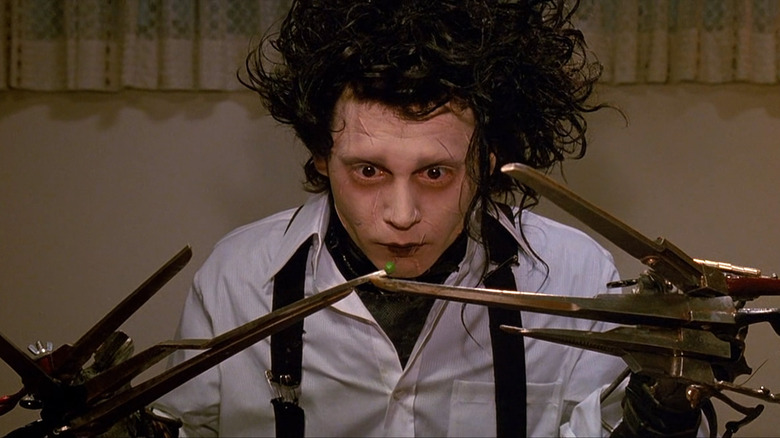
Tim Burton's masterpiece "Edward Scissorhands" begins as a gothic fairytale. A creature with a childlike innocence and scissors for hands is abandoned in a dark castle after his creator dies. Edward's very existence is magical. The film ignores the logical questions of how he was created and survived all those years alone. Instead, Burton takes you on a fantastical and emotional journey through Edward's introduction to the real world, an exaggerated version of 1950s suburbia. The heightened, quirky look of the manicured lawns, uniform rows of pastel-colored houses, and shiny cars are quintessential Burton. Yet this society still functions in a modern, everyday manner.
Edward's black, industrial garb and pale skin stick out like a sore thumb in this sunny, cookie-cutter neighborhood. At first, the townspeople are frightened of him, but they soon admire his talent for giving haircuts and grooming their dogs. The suburb accepts him until a malicious group of boys take advantage of his naïveté and frame him for a crime. Everyone turns on Edward, suddenly fearing that he is violent. "Edward Scissorhands" uses the magic of its pure-hearted title character to critique American conformity and society's judgement and cruel ostracization of those who are different, similar to the way "Pan's Labyrinth" portrays an innocent being taken advantage of by the harsh world.
Paddington
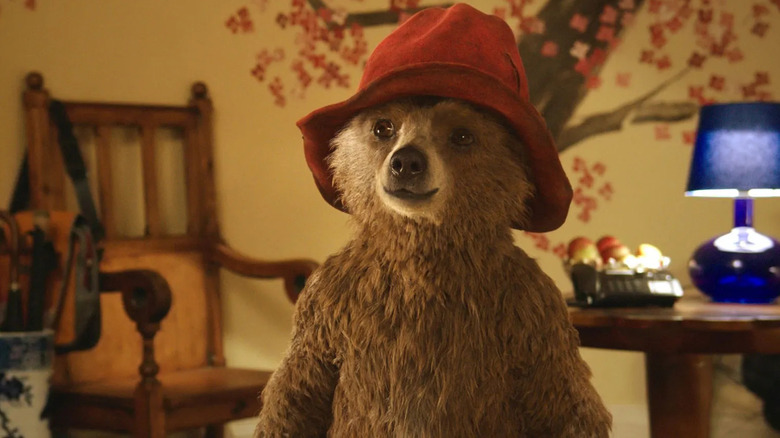
"Paddington" is obviously much more lighthearted than "Pan's Labyrinth." The beloved tale of the cuddly Peruvian bear who travels to London in search of a place to live is an example of a children's film that uses elements of magical realism to teach young audiences about deeper real-world issues.Paul King's film about a kindly, marmalade-loving bear is a comforting delight made with bright and energetic direction. It is set in a contemporary, bustling England that we recognize but with an extra touch of whimsy. Finding himself lost and alone at Paddington Station, Paddington meets the kindly Brown family who offer him temporary solace. There are numerous silly mishaps as he struggles to assimilate into their modern yet cozy home.
The fact that Paddington is a talking bear is treated as not completely out of the ordinary. Even in the second film when Paddington goes to prison, he is placed with other humans without hesitation. Paddington's adjustment from the jungle to an English home addresses issues of xenophobia, discrimination, and adoption with emotional resonance, kindness, and humor. The film helps children understand the challenges that displaced persons face when trying to adjust to unfamiliar places. "Paddington" helps young audiences have more empathy for others and not be afraid of their differences.
Amélie
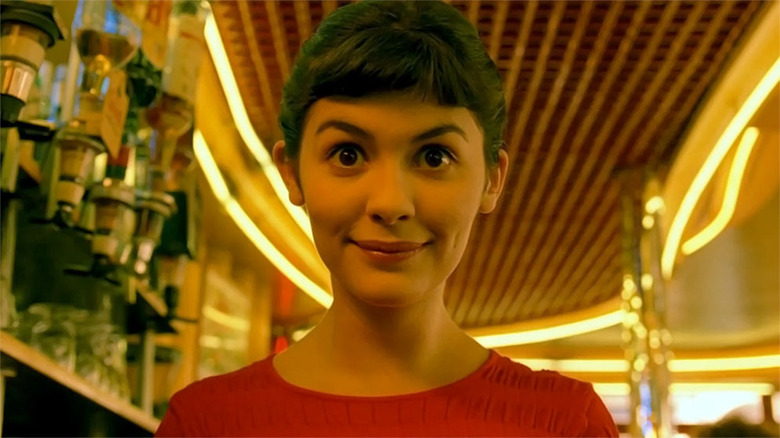
The film "Amélie," from director Jean-Pierre Jeunet, is a quirky, original romantic comedy that follows an introverted waitress on a quest for life's meaning. She decides to do good deeds to change other people's lives for the better. "Amélie" is different than most magical realist films because it creates an unreal-looking world. It has a bold color palette with vibrant and deeply saturated reds, yellows, and greens. There are little to no blues, creating an amber-encased look. These unique colors add a sense of nostalgia and idealism to a version of Paris that, while somewhat modern, seems displaced in time. The use of whimsical music, rapid editing, and Amelie's direct address to the camera also remove the film from reality. The little plot improbabilities that appear throughout the story have a magical bent, from her mother dying after a suicidal tourist jumps from the roof of Notre Dame and lands on her, to Amélie dropping a perfume-stopper, dislodging the exact wall tile that reveals an old metal box whose owner she must track down. These unique coincidences give the audience hope that there is more than the mundanity of our everyday existence and that we are all connected in some way. They are indications that there is something cosmic at play in our lives. Although "Amelie" has a much brighter, cozier mood than "Pan's Labyrinth," it is equally visionary and unique.
Kiki's Delivery Service
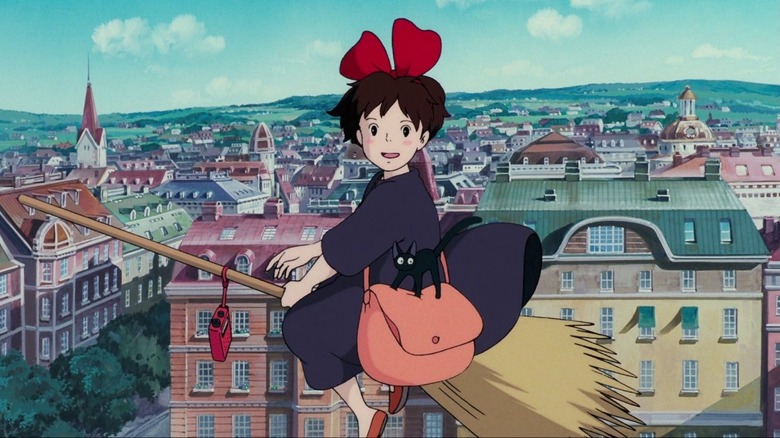
Hayao Miyazaki's "Kiki's Delivery Service" is a tender fantasy about a teenage witch who must spend time on her own to find her true vocation. The film has minimal stakes, a true coming-of-age tale that gently drifts through Kiki's relationships and assimilation into a charming seaside town. The town, inspired by Visby, Sweden, looks familiar to our own world but is set in an alternate 1950s where World War I and World War II never happened.
Witches in films are typically seen as villains or social outcasts, members of secret societies with ulterior motives. What makes "Kiki's Delivery Service" so unique is that magic is incorporated in an authentic way. Witches are everyday persons whose special talents are regarded as ordinary skills that allow them to be meaningful, hardworking contributors to society. While many characters are in awe of Kiki because they have never seen a witch before, witches are well-known as part of the world. The idea of magic and witches being so commonplace is intriguing.
Miyazaki also uses magic abilities as an allegory for inspiration and creativity. When Kiki loses her powers, she must search within herself to find what motivates and inspires her. If you enjoyed the childlike elements of "Pan's Labyrinth," this sweeter narrative is a great palate cleanser.
The Green Mile
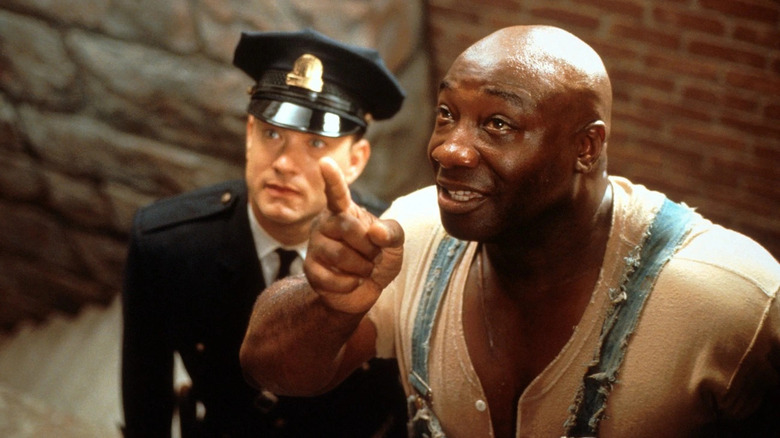
Stephen King is best known for his horror stories, but he often employs magical realism in his work as well. "The Green Mile," what /Film calls an "underappreciated gem," is a stark drama about the grim realities of incarceration during the 1930s. It has very bleak and industrial surroundings: the steel grey bars that deny the prisoner's freedom, the bland, brown walls, the harsh lights.
The magic in this film comes from a falsely convicted inmate on death row, John Coffey (Michael Clarke Duncan). He is a gentle giant with supernatural healing abilities that cure an inmate's infection and resurrect a mouse named Mr. Jingles. An empathetic prison guard named Paul is in awe of his abilities and starts to doubt his guilt, believing that he must have been convicted because of his race and stature.
Much like "Pan's Labyrinth," the magic in "The Green Mile" critiques the violent environment — particularly the sadistic behavior of some of the guards. It illustrates the humanity of prisoners and the cruelty of the death penalty. The magic does not just lie in John's ability to heal, but also the kindness of his heart despite being brutally mistreated by society.
Beasts Of The Southern Wild
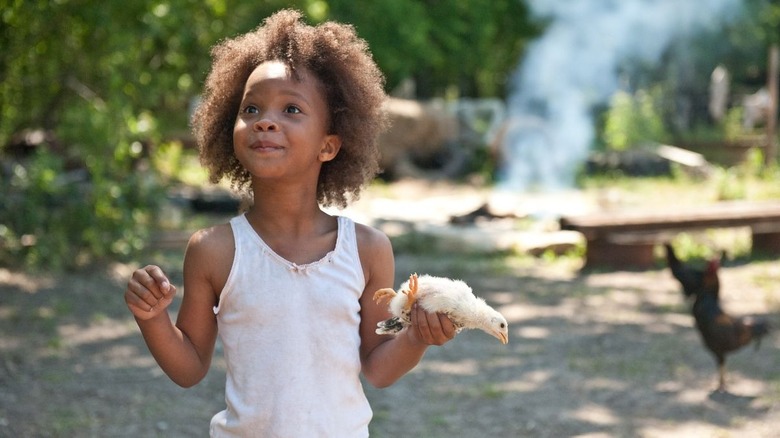
If you enjoyed the exploration of childhood in "Pan's Labyrinth," you will enjoy the wondrous "Beasts of Southern Wild," which draws its magic from the innocence of youth. The film constantly questions the liminality between a child's reality and imagination, especially in a world impacted by a devastating global tragedy where the ice caps are melting. Quvenzhané Wallis is one of the youngest persons to be nominated for an Academy Award for her portrayal of Hushpuppy, an intelligent and imaginative girl who lives in a flooded Louisiana bayou. Director Benh Zeitlin anchors the film in Hushpuppy's curious and bouncy perspective. She also tries to make sense of her difficult relationship with her ailing father Wink.
"Beasts of Southern Wild" has gorgeous landscapes of abundant plant life and pale skies that are under a grave threat. The film emphasizes the beauty of nature that we should work hard to preserve. The impact of global warming is felt on Hushpuppy's ramshackle community and takes a magical turn when she meets massive prehistoric creatures called aurochs, which are pigs crossed with boars. They symbolize the fear of what could happen if climate change is not addressed, and how that will not only impact our own lives but the lives of future generations.
Perfume: The Story Of A Murderer
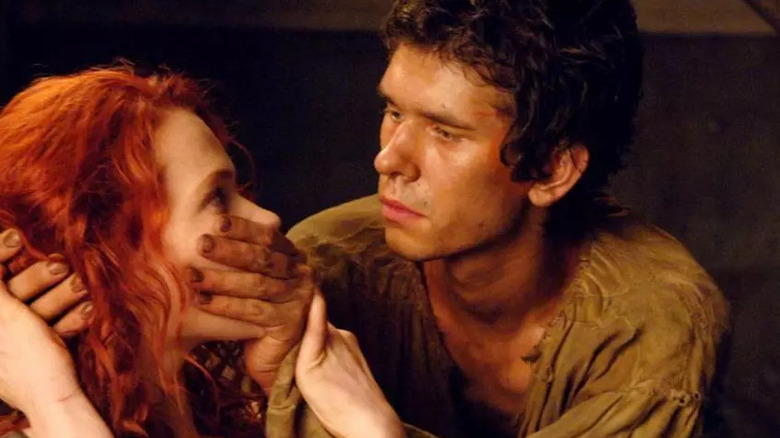
If you were intrigued by the baroque visuals of "Pan's Labyrinth," you will enjoy the dark fantasy "Perfume: The Story of a Murderer." It's a strange film that mixes many genres including crime, erotica, and horror. "Perfume" is set in the very realistic and grimy world of 18th-century France. Director Tom Tykwer (of "Run Lola Run" and "Cloud Atlas" fame) addresses the changing social and class dynamics of the era through the story of Jean-Baptiste Grenouille's rise from an orphan to a skilled master perfumer. Grenouille has the strange magical power of an uncanny sense of smell, yet he does not have his own scent. He hunts down and kills numerous local virgins to harvest their sweet, pure aromas. There is one virgin in particular who catches Grenouille's eye, and her desperate father tries to stop him.
Tykwer's kinetic visuals are unsettling, digging into the putrid squalor of Grenouille's bizarre world defined by enthralling aromas. The film builds up to a deliriously weird ending caused by a magical perfume that is so powerful it puts people in a sexual frenzy. This strange tale uses magical realism to raise questions about people's hidden desires and the absurdity of conservative restrictions.
Read this next: Sci-Fi Movies That Accurately Predicted The Future
The post 10 Magical Realist Films To Watch If You Like Pan's Labyrinth appeared first on /Film.
0 Comments